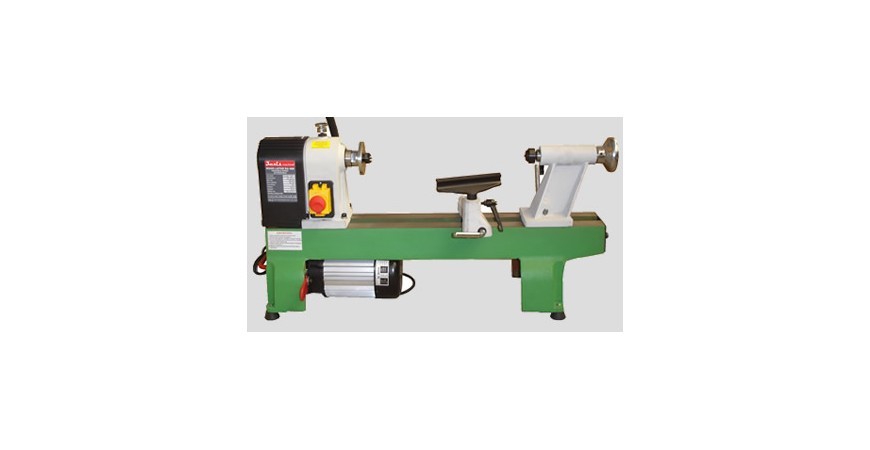Wood Lathe
Lathe Turning Basics
If you planning a project which involves wood or metal turning, you will need a few lathe turning basics to help get you comfortable with using machinery for the first time. If you have never used a lathe before, you might like to try a few practice pieces before embarking on your project to avoid wasting lumber when trying to get your turning techniques right.
How a Lathe Works
A lathe is a machine in which you clamp your piece of material to two center points at each end. You can also clamp your material on either one or both ends if you are working on small pieces. If you use one end, your material will be clamped using chucks or collets.
The turning area can be lengthened or shortened according to the length of your piece of material. Clamp one end of the material into one center point and then adjust the movable end of the lathe and clamp the other end of your material into that center point.
Always tighten accordingly. Each part of the lathe must be centered correctly for even cutting. Once your material is in place, the turning cuts are made by a tool which is rested on a balance and utilized by the operator.
Using the Lathe
Your tools must always be sharp, held correctly and with the correct amount of pressure to avoid ripping the material. If you have properly-sharpened gouges, parting tools, skew chisels and scrapers, you will cut cleaner and be less inclined to rip or gouge the material that you are turning.
Speeds
It is vital that you use the correct speed for the item or tool you are using. A good rule of thumb is ‘wide stock, low speed’. If you are turning a thicker piece of timber, slow down the speed of the turner so you do not damage the material or injure yourself. Thinner pieces of material require a faster speed. Most lathes operate at an average speed of between 500 revolutions per minute and 4000 revolutions per minute.
Right Handed and Left Handed
Users must also be aware that there are certain advisories that come with using a wood turning lathe, depending on whether the operator is right or left handed. Place the cutting tool in the correct position, so as to offer a clean and neat cut, but keeping fingers out of the line of fire. If you are right handed, your left hand should be against the tool rest and your right hand should be holding the tool handle. Your left thumb should be on the top of the tool, steadying it against the forefinger and the tool rest. For left handed, reverse these instructions.
Grains
Always cut with the grain and not against it. To bring out the natural beauty of the wood you are turning and to maximize the potential of your project, keep your turning technique in line with the wood grain. Always keep the bevel behind the sharp edge of the tool that is resting on the wood. This is not just a aesthetic advisory precaution but a safety one as well.


